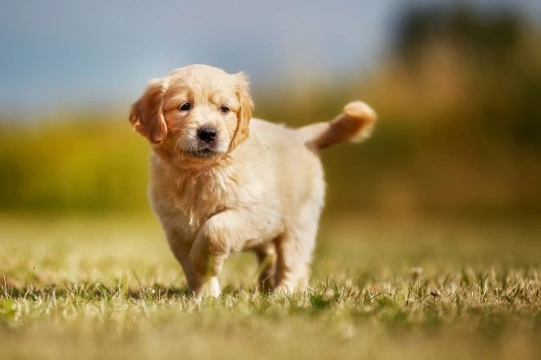
The behavioural and socialisation challenges of the lone puppy
When we think about puppies that are still young enough to be with their dam, we usually envision multiple pups all climbing around, playing and huddling up together. The anatomy of the female dog is in fact designed to care for multiple young simultaneously, as evinced by the large number of milk-producing nipples female dogs have, and the fact that the uterus of the dam is large enough to hold multiple pups prior to their birth.
This being the case, it is relatively unusual for a dam to give birth to just one puppy on their own, but in some cases, this can happen or is the norm for some dog breeds. The reasons for this are variable, and can include the loss and absorption of another foetus prior to delivery, or only one pup surviving birth. Some breeds, such as the Bulldog, will often deliver small litters anyway, and one pup alone is not uncommon within certain breeds.
When one lone puppy is born and raised without littermates, a range of potential problems may arise connected to this, in terms of socialisation and development.
First of all, if there is only one pup in the uterus, they then gain all of the nutrients that the dam has available, which can mean that the lone pup is larger than normal at birth, which might potentially lead to problems with the delivery. Even if the puppy is born and delivered safe and well, there are various other factors that the lone pup may miss out on, which require careful management and a good awareness of the potential issues.
In this article, we will look in more depth at the potential socialisation and behavioural challenges that can be faced by the lone puppy. Read on to learn more!
Warmth and companionship
While the pup or pups in a litter will cuddle up with the dam for warmth and security, pups in multiple births spend a lot of time cuddled up with their littermates too, who are a constant presence. The dam will have to leave the pups now and then to go to the toilet and eat, which may leave the pup on their own for a while, something that multiple puppies can accommodate for.
On the other hand, the lone pup will never face competition for food and resources, and will have the whole attention of the dam. While this means that they will almost certainly grow and develop at a steady rate, it can lead to issues later on, as the lone pup will never have had to learn to wait or compete or fall into a pecking order over resources.
Bonding and relationships
The lone pup is very likely to form strong, early bonds with people, as the chances are that they will get lots of attention from people and not have the socialisation frame of reference that multiple puppies gain from each other. This means that while the lone pup will almost certainly be personable and charming with humans, they will miss out on some of the important learning phases that they would normally get from the rest of the litter, such as the basics of interacting with other dogs, and bite inhibition.
Tactile stimulation
Tactile stimulation is the name for the learning and experience process that pups gain from each other; the presence of other warm bodies, pups crawling around, and the body to body contact that all pups are familiar with. While petting and playing with the pup by people will provide them with some of these needs, the pup does still need to learn about different sensory inputs, and the presence of other dogs that are the same size and age of them. This can be simulated by providing a stuffed toy for the pup, which they can cuddle up with, and crawl and climb over. It is also vitally important to start handling and touching the puppy as soon as possible, and providing much more sensory stimulation than a litter of multiple pups would need.
Bite inhibition
Bite inhibition is the process by which pups learn about the fact that their teeth are sharp and can cause pain, and the process of modifying the pressure of their bite to avoid this. Within the larger litter, pups pick up this skill by biting their littermates and receiving a yelp or pain response, and by the process of learning that it hurts when another pup nips them too. Lone pups do not get the benefit of this, and will find it much harder to learn about moderating their teeth, and it is important that you work with the pup to provide feedback on this yourself in the absence of littermates to do it for you!
Socialisation with other dogs
The pup’s relationship with the dam is unique among canine relationships, and does not teach the pup everything that they need to know about dealing with peers and unrelated dogs! It is vital to begin exposing the lone pup to the presence of other dogs as early as possible, and preferably dogs of around the same age. Taking your pup to puppy socialisation classes is a good way of doing this, as is attending puppy parties and taking every chance to allow your pup to meet a range of other dogs as soon as they are able to.



